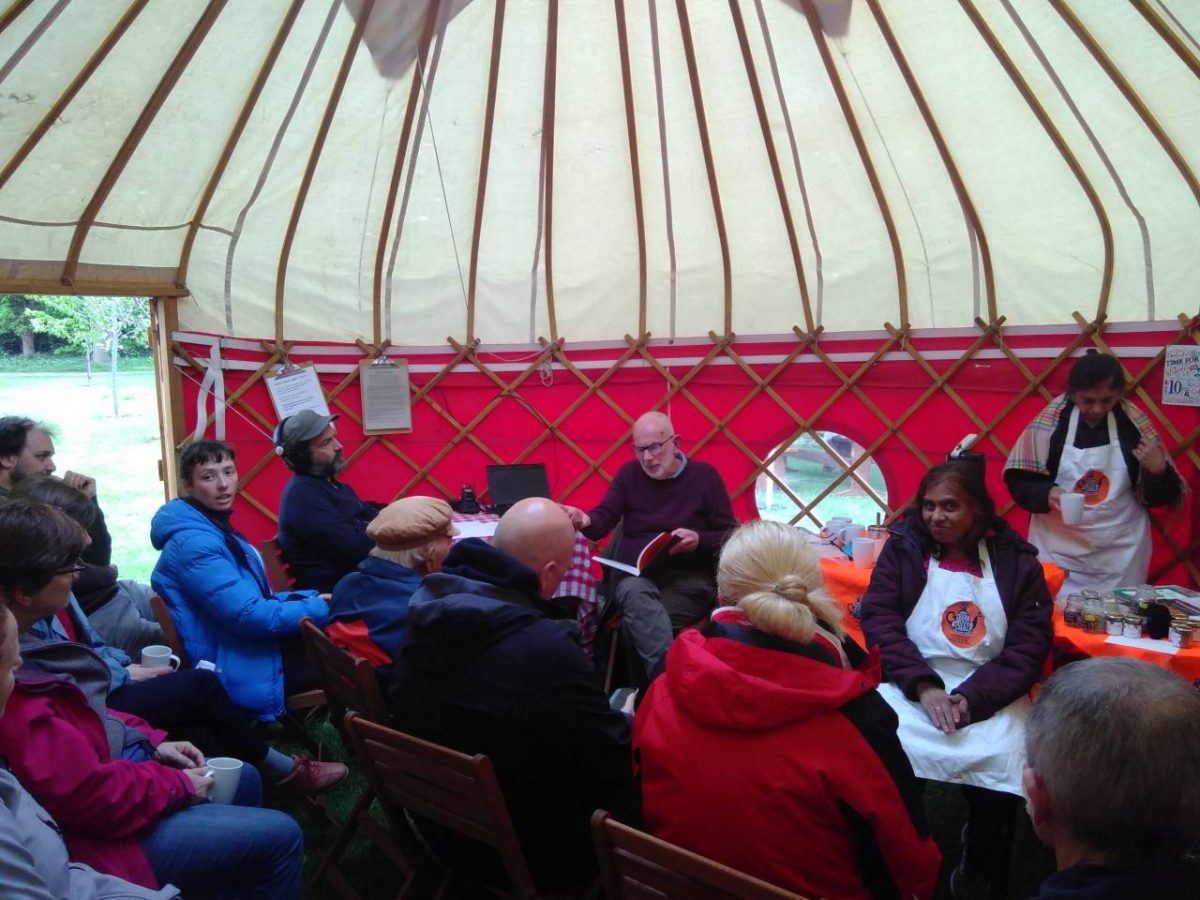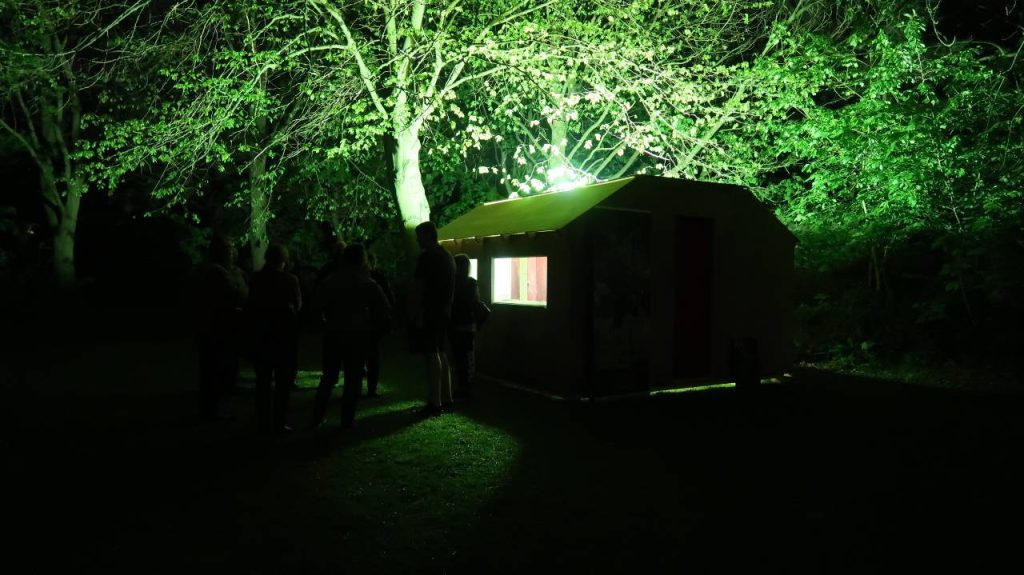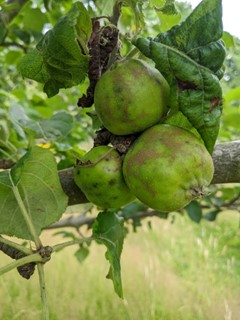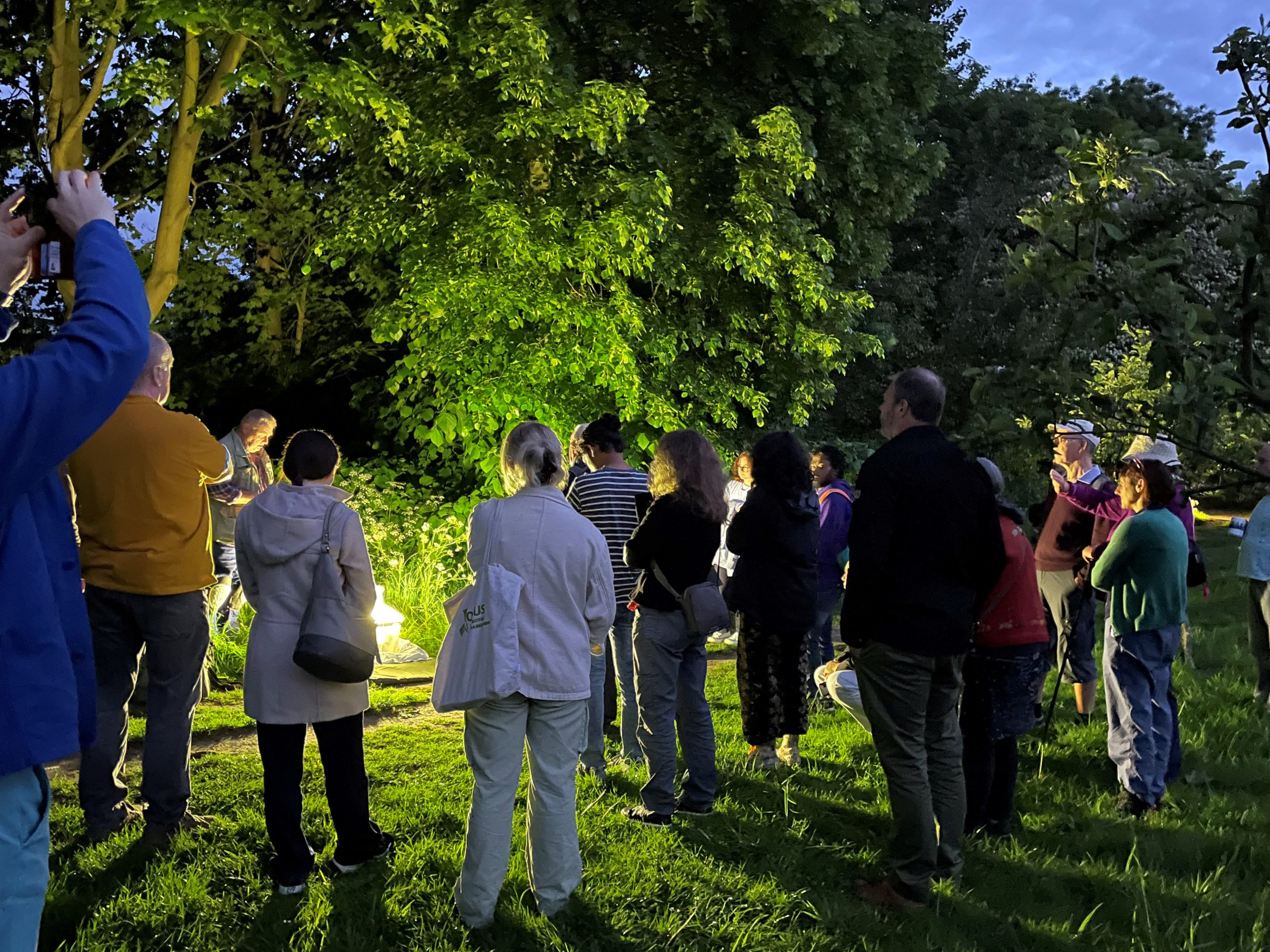
More than 200 people visited the yurt, walked the Route, drew the trees, tasted traditional Japanese foods under the blossom and drank foraged teas over 2 days. My trip started with a workshop with 25 School of the Arts second year students as part of their Creative Dissent module on tuesday. Following a talk, they were given various tasks to explore and document the trees and also to spend time reflecting.
May Day May Day began with sunshine and lots of helpful FREEQ/Hall reps. getting us set up and at midday a walk around the route with loads of newcomers discovering the trees for the first time. Back at Barefoot Orchard we wove natural, waste and found materials with Daniel Fountain that connected the orchard trees linking us to the cultural history of May Day and the hidden threads of mycellium fungi connecting the trees under the earth. People wrote collaborative or individual messages about their own feelings about the climate & ecological emergency to send out into the world via morse code guided by Paul Conneally, poet and Tom Dixon, amateur radio enthusiast. These messages were transmitted live by hand on citizens band from the yurt field station.

Gillian Whiteley, Lecturer in School of the Arts introduced the rich history of artists manifestos and pamphlets and invited people to make a pamphlet about something they cared about in the natural world.
Mid-afternoon some folk went to visit the bees in two sell out trips to the Campus Apiary. Rose, a chef at Towers Kitchen, prepared some new recipes cooking with bags of nettles, marigold, garlic mustard, rosemary & borage flowers that I had foraged on campus. These included garlic mustard & Rosemary scones & nettle, garlic mustard & nettle pesto.
The Japanese Society bought Japanese foods to share including dango, which is traditionally shared between friends at blossom viewing time. As night fell, we listened to writer John Newling reading from his insightful Letters to Nature and deepened our knowledge of moths with experts Graham and Nona and explored the awesome Moth Hotel.

Next morning we re-visited the Moth Hotel and were disappointed to find only eight moths had checked in. Graham put this down to a heavy shower of rain at dusk and cool weather.. Nonetheless Graham and Nona captivated us with their stories and encyclopaedic knowledge of night flying insects while we did some drawings of them and then set them free. Professor Jane Hill co-hosted the lunchtime walk and shared her wisdom on biodiversity, and her learning from the patterns of movement of species, especially moths and butterflies, as they shift in response to climate breakdown. She taught us about the importance of direct observation and recording and citizen science at this time of rapid change. On the walk we both touched on the growing evidence that erratic seasonal patterns and reduced winter cooling impacts both fruit trees and their blossom and also affects the life cycle of insects and disease levels. After a fascinating discussion with Jane in the yurt, Jon Walker presented a cheque to Transition Loughborough as part of LU’s Inside Out Community Fund as a contribution to the Master Apple Presser scheme. This is a scheme to build a new, home-made apple press and scratter and then produce plans of how to DIY. The idea is also to get more local people trained up in how to use the press and hold apple pressing events in the region. Look forward to seeing the press in action at our next harvest event on 19 October.
Fruit Routes aims to connect people to the places that they live, work and visit in meaningful ways that weave connections between the local, the global within the context of climate and ecological emergence. We engage students, academics, researchers, university staff, local people and volunteers in active, collaborative and exploratory activities to deepen our understanding of the earth and each other and to seed new ways of doing and being. email for more info. or to go on our mailing list.
Images by Chris Mear, Paul Conneally, Anne-Marie Culhane & Jasmine Salter


